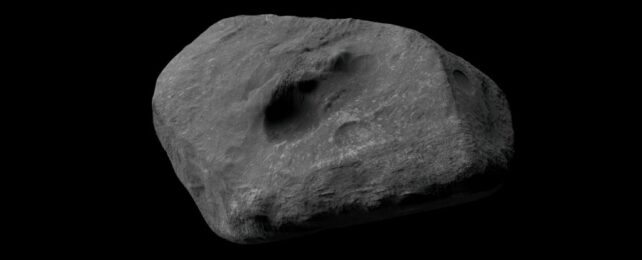When asteroid 2024 YR4 first revealed itself to humans on 27 December 2024, it seemed to have just shown up out of nowhere.
An entire asteroid doesn't just materialize out of nothing, though, and now astronomers have determined what 2024 YR4 is made of, what it looks like, and the unexpected place in the Solar System that it came from.
2024 YR4 hails from the middle of the main asteroid belt that hangs out between the orbits of Mars and Jupiter – and it was pushed towards Earth by a gravitational interaction with Jupiter, which usually protects the inner Solar System from flying rocks.
"We are a bit surprised about its origin in the central main asteroid belt, which is a location in the asteroid belt that we did not think many Earth-crossing asteroids could originate from," says astronomer Bryce Bolin of Eureka Scientific in the US.
2024 YR4 first captured the world's attention by raising the alarm of potential impact. Although it posed no danger during the Earth flyby on which it was discovered, initial observations suggested that it was on a trajectory that could bring it within striking range of Earth on its next go-around in 2032.
The danger has since been downgraded to practically nothing (although the Moon might still be in the firing line, with a few percent chance of impact). 2024 YR4 is known as a 'city killer' asteroid, not because it will hit Earth, but because if it did, the devastation it could wreak would be pretty huge.
When potentially hazardous asteroids show up, it's important for planetary defense to study them. How big they are, how they move through space, and what they're made of can all play a role in impact, and where they come from tells us if we should watch that corner of the Solar System for other dangers.
So the discovery of 2024 YR4, and the initial alarms it raised, set scientists to work. Bolin and his colleagues used the W.M. Keck and Gemini South telescopes to obtain detailed observations of the space rock, to put together the most accurate description of its characteristics.

"YR4 spins once every 20 minutes, rotates in a retrograde direction, has a flattened, irregular shape, and is the density of solid rock," Bolin says.
"The shape of the asteroid provides us with clues as to how it formed, and what its structural integrity is. Knowing these properties is crucial for determining how much effort or what kind of technique needs to be used to deflect the asteroid if it is deemed a threat."
Asteroids come in several different flavors. The most common are the carbonaceous asteroids, which are made up of a mix of different minerals, and can (but don't always) have a pretty loosey-goosey 'rubble pile' composition, like Bennu, Ryugu, and Dimorphos, famously the subject of an asteroid redirection test mission.
S-type asteroids are much denser, usually a single chunk of siliceous rock. The researchers believe that this is the composition of 2024 YR4, information that would inform strategies for impact mitigation.
It also measures between 30 and 65 meters (98–213 feet) across, and has a flattened shape somewhat like a hockey puck. Since most asteroids are thought to have shapes like potatoes or spinning tops, this is a bit surprising, and may help astronomers learn how 2024 YR4 formed.
This information, the team says, will help scientists assess the properties of other potentially hazardous asteroids. It will also help refine rapid-response observation techniques for asteroids that, like 2024 YR4, just appear as though out of nowhere.
And the researchers are very excited to see what the rock will do in the future.
"It's one of the largest objects in recent history that could hit the Moon," Bolin says. "If it does, it would give scientists a rare chance to study how the size of an asteroid relates to the size of the crater it creates – something we haven't been able to measure directly before."
The research will appear in The Astrophysical Journal Letters, and is available on arXiv.
